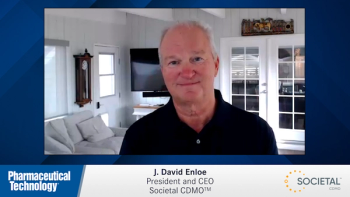
IMS Predictions Foretell Change, Positive Change
IMS Health released its latest global spending report over the summer, confirming that times for the pharma market are indeed changing.
IMS Health released its latest global spending report over the summer, confirming that times for the pharma market are indeed changing. The dreaded “patent cliff” that has likely been haunting the dreams of pharma business leaders for the past few years may still exist, but there is more to look forward to. Estimates from IMS Health seem to demonstrate that the industry has not only been planning ahead to ensure that the plague of patent expiries doesn’t kill business altogether, but has done quite a good job at having a backup plan. Take a look:
A pipeline rebound is on the way. An expected 160 to 185 new molecular entities (NMEs) are expected to be launched between 2012 and 2016. To compare, 140 NMEs were launched between 2006 and 2010.
Global spending on medicines is expected to grow 3 to 6%, reaching a total $1.2 trillion in 2016. Spending on generic drugs may reach as much as $430 billion, and on brand drugs as much as $645 billion. The increase is being driven by volume growth in pharmerging markets and higher spending by developed nations, report IMS.
With any good news of course, comes the chance of not-so-good news.
In the United States, spending on pharmaceutical drugs is expected to grow 1 to 4% between 2012 and 2016. This growth is considered a recovery but still historically low, says IMS. Part of the reason for the predicted slow growth is the new low-cost generic drugs that will be hitting the market and reducing overall spending. The US Generic Drug User Fee Act (GDUFA) has passed and is being implemented this fall (Oct. 1, 2012 to be exact). GDUFA means good news for consumers and for FDA in terms of obtaining additional user fees to meet its review needs, but it’s no secret that the industry makes less money on generics than on branded products. As a result, the US share of global spending is expected to decline from 41% in 2006 to 31% by 2016.
That said, IMS predicts “an accelerated shift in spending to generics” as well as to biologics and biosimilar products over the next four years globally. With US Healthcare Reform reaffirmed by the Supreme Court, the pathway for biosimilar products remains open and will be a major focus of biopharmaceutical development efforts in coming years
Other changes, reports IMS, include increased spending by the pharmerging markets (including the BRIC nations). Such spending is expected to grow 12 to 15% by 2016 and will surpass spending by the EU5 countries (France, Germany, Italy, UK and Spain) for the first time.
The top therapeutic areas will account for 42% of all global spending on drugs. While the top targets are not expected to change (e.g., drugs targeting cancer, cardiovascular diseases, diabetes, Alzheimer’s and autoimmune diseases, and asthma and other respiratory conditions), IMS does expect that greater availability of existing and new medicines will transform care worldwide. Specifically, while gaps for some treatments will remain (largely in developing nations meaning that the industry still needs to focus on this area) global priority diseases and novel mechanisms of action are likely to provide more options for patients across the board, reports IMS.
I look forward to watching the pharma landscape grow in new and different ways over the next four years as these regulatory and spending developments shape the industry’s direction.
Newsletter
Get the essential updates shaping the future of pharma manufacturing and compliance—subscribe today to Pharmaceutical Technology and never miss a breakthrough.

